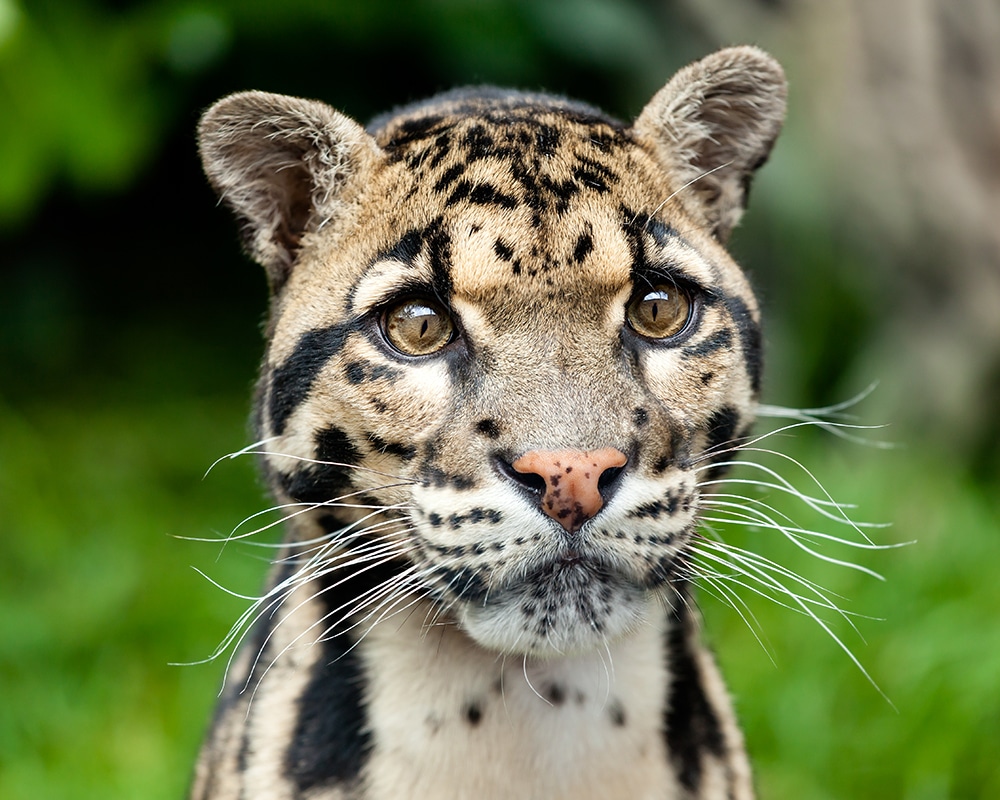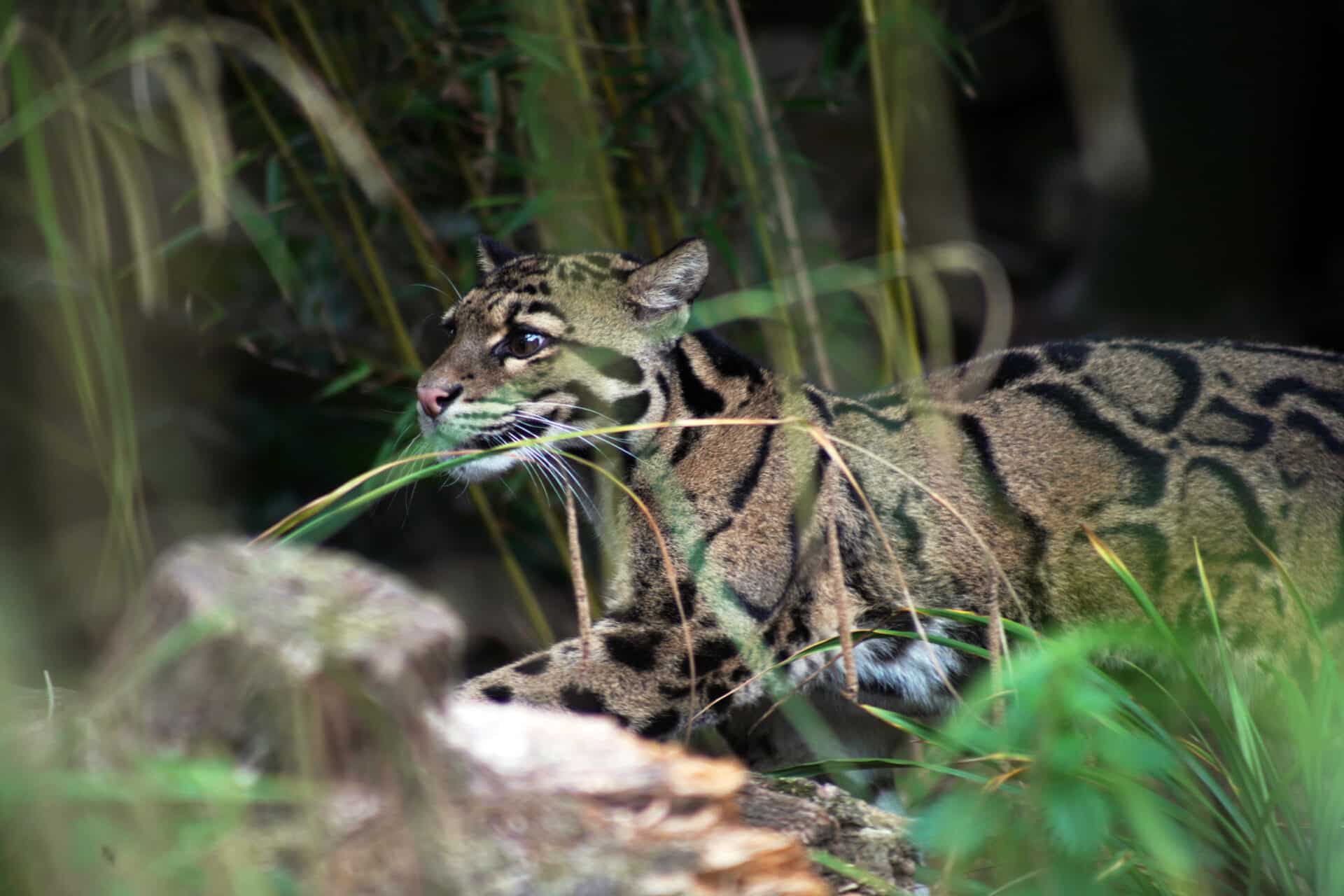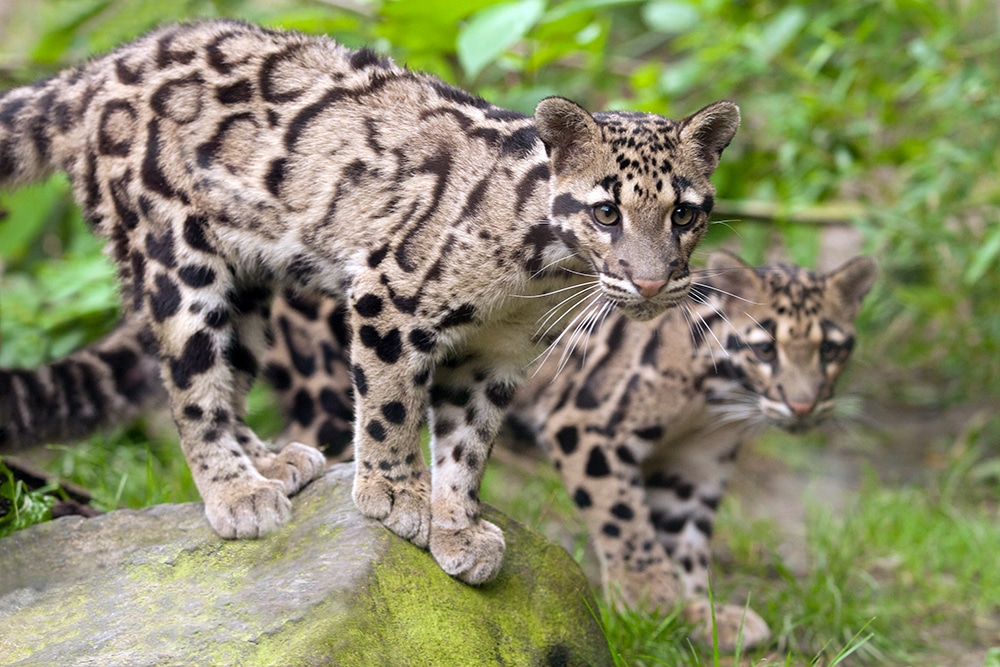Clouded leopard
Common Name: Clouded Leopard
Scientific Name: Neofelis nebulosa
The clouded leopard has a stocky appearance, mainly due to its short, stout front legs, and large paws. The hind legs are disproportionately longer and together with an exceptionally long, plush tail this aids its arboreal agility and balance, even on narrow branches. Clouded leopards are one of the few cats which can hang from branches by their hind feet and then descend a tree trunk headfirst.
Clouded Leopards have a unique skull structure similar to that of Paramachairodus (a primitive saber-toothed cat), facilitating an exaggerated gape of up to 85 degrees. The clouded leopard has the largest upper canine teeth, of any other living cat compared to their overall size.
Clouded leopards are closely related to snow leopards, like which they can purr but can’t roar. Despite their small stature, clouded leopards feeding, stalking and grooming behaviour is much like that of any big cat. Despite being such excellent climbers, clouded leopards can also travel long distances on the ground, crossing a home range of up to 20 square miles.
Fast Facts
-
Status
Vulnerable
-
Size
Head & Body 60 - 100cm
-
Weight
11- 23kg. Adult males are larger than adult females
-
Gestation
Estimates range from 85-109 days
-
Young
2-3
-
Life spam
13 years
In the wild
Clouded Leopards are carnivores. They are nocturnal hunters and will stalk their prey both on the ground and in the trees. Although they hunt monkeys, small deer, wild pigs, birds, and rodents, they will also target domestic animals like goats, pigs, and poultry.
Most sightings have been in primary evergreen tropical forest at an elevation up to 3000m across South East Asia. Clouded leopards prefer areas where prey species are abundant and there is little predator competition from tigers and leopards. Although they are happy on the ground, they are mainly arboreal, spending most of their time up in the trees.
Little is known about the breeding behaviour of clouded leopards in the wild, and this lack of knowledge has hampered efforts to breed them in captivity. Males become aggressive and have been known to kill females with a bite to the neck after mating. It has since been discovered that introducing the male and female before maturity is the best way to mitigate this behaviour.
Leopards and tigers across the clouded leopards’ range could pose a threat given their size difference, however, it is likely that the smaller, more agile and arboreal clouded leopard would seek refuge high in the trees to avoid confrontation. These beautiful cats are still, however, hunted by humans for their meat and fur.
The IUCN red list estimate from November 2020, suggests that there are between 3,700 – 5,580 mature individuals in the wild.
The biggest threat to the species currently is the loss of habitat due to deforestation of the area, especially for palm oil plantations.
Despite poaching and trade of clouded leopards being prohibited by CITES since 1975, these illegal practices still persist across much of their range, where their skins and body parts are used in traditional medicines, cultural décor, and cuisine.


